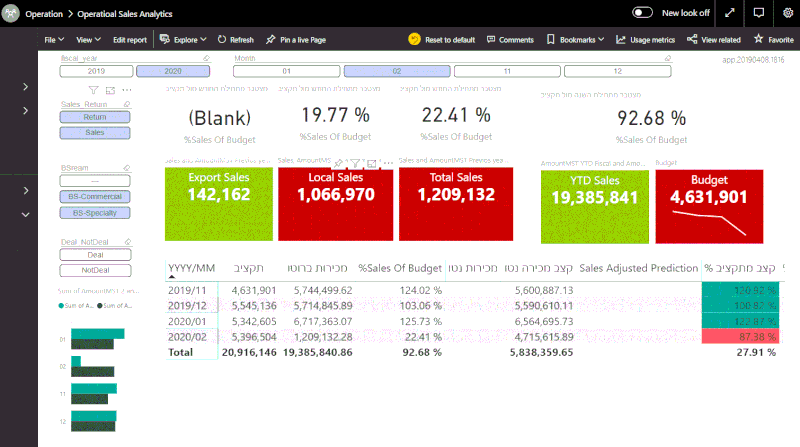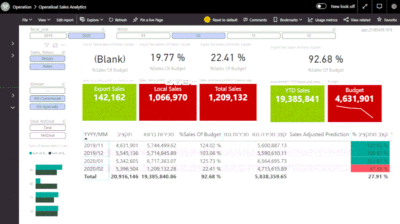- April 17, 2024
- Posted by: David Marshall
- Category: Management, Manufacturing, Productivity

Every manufacturer keeps track of their output and how many units they’re making and selling each month. (At least I hope they are! I’ve seen some operations where that’s a valid question.)
But not every manufacturer measures the same KPIs, but they’re absolutely critical to keep track of on a monthly, weekly, or even daily basis. Here are the five KPIs* every manufacturer should measure.
By the way, the plural of KPI is KPIs, not KPI’s.
1. Safety
Safety is the most critical aspect of any manufacturing operation. People can become permanently injured or even die from workplace injuries. Never mind a bad back or carpal tunnel syndrome. People can become permanently disabled because of a lapse in safety. Plus, it can be incredibly expensive when you have to pay for a worker’s medical costs, rehabilitation, and worker’s comp.
Not only is safety everyone’s responsibility, it’s the first thing you should be measuring on a daily basis. Even the traditional “____ Days Without an Accident” sign can be a great motivator to people, especially as the number climbs.
Don’t leave safety up to the managers, make it everyone’s responsibility to practice and to count.
2. Inventory
 I’ve been talking about this more this month, but your inventory needs to be measured on a regular basis, and you should be able to count everything you have in 24 hours, whether you do it by hand, or you have an inventory management system.
I’ve been talking about this more this month, but your inventory needs to be measured on a regular basis, and you should be able to count everything you have in 24 hours, whether you do it by hand, or you have an inventory management system.
You also need to make sure you’re measuring your inventory by line item, not by gross dollars. Even if you believe your total inventory is “only off by 3%,” that 3% could still represent 1,000 units of a critical part that you won’t be aware of until someone goes to look for it in the warehouse.
If you had measured your inventory by line item, and the associates had the discipline to count every item they removed, you would know days in advance when you needed to reorder that critical item.
3. Productivity
This isn’t just about the output on the part of your associates on the floor. This is about measuring everyone’s job, what actually needs to be done, and how many people need to do it. For example, whenever we had a tool go missing, it often took two people to search the plant for it.
I don’t know why it took two people to find it, and neither did anyone else. But that was an easy problem to fix.
Another time, we found that we had two people whose sole job was to try to straighten out 20-foot tubulars that had gotten bent so they could meet the exacting standards our customers required. They would straighten a tubular and send it off for inspection. If it failed, it got sent back, and they tried again. And if it failed again, it got sent back again. Lather, rinse, repeat ad nauseam. But, we only had a 5% success rate with straightening out the bent tubulars. The rest just kept getting recirculated over and over again.
The first thought many people had when I told them that story was to start counting the number of times they straightened a tubular and throwing it out after, say, four attempts.
But that was the wrong approach. Instead, we did a little digging and found out the reason the tubulars were getting bent was that they were being stored right on the floor; they were getting bent by the forklifts when they were being moved around.
So instead, we put some pieces of 4×4 lumber on the floor and set the tubulars on those. That raised them off the floor and that stopped all the bending. We no longer had to straighten any tubulars and that nearly eliminated our rejection rate for bent tubulars.
4. Efficiencies
Your efficiencies are different than your outputs, they’re your productivity, but measured in terms of staff hours, not just raw numbers.
For example, let’s say you have an order picker, and he picks 25 items a day, and another order picker picks 50 per day, who is the more efficient? It’s clearly the second one, but why is she the more efficient one?
You need to dig into this problem to figure out why. Is your warehouse poorly laid out? Is OP #1 picking only heavy items halfway across the warehouse and OP #2 is picking light items that are right next to the packing station? Or does OP #1 have mobility issues and OP #2 is on roller skates? *
* To be clear, roller skates are clearly a safety violation. Do not let your pickers — or anyone — wear roller skates at work.
You can’t just reach the conclusion that #2 is productive and #1 isn’t until you actually do the research and figure out why there’s a disparity. Once you can figure that out, you can eliminate it and bring #1 up to a more productive rate.
5. Excess/obsolete inventory
Every year, you need to do an ABC analysis of your items and see which ones are making you the most money. If you’re like nearly every other company, you’re going to find your catalog follows the Pareto Principle, also known as the 80/20 rule.
That is, 20% of your catalog is responsible for 80% of your sales.
That may vary by a little bit, but for the most part, it will be true.
When you do an ABC analysis, you’ll find that high-performing 20%. Those are your A products. They’re the ones you need to keep making and keep on hand. The next 15% are your B products, and let’s say they bring in another 15% of sales.
That’s 95% of your sales and 35% of your products. (Your actual percentages will vary.)
But the remaining 65% of your products are only bringing in 5% of your total revenue. So why are you even keeping them?
You could get rid of them completely and outsource those sales to a competitor, partner, or load them into your 3D printing catalog and only print them when needed. But what you don’t want to do is keep them in your warehouse.
Or if you insist on keeping them, put them in the far end of the warehouse and put all your A items as close to the loading dock and packing station as you can. Don’t keep them in the main part of the warehouse. (That’s probably why OP #1 was struggling so much.)
If you can measure and master these five key performance indicators, you can see great strides in your manufacturing operations’ productivity and profitability.
I’ve been a manufacturing executive, as well as a sales and marketing professional, for a few decades. Now I help companies turn around their own business, including pivoting within their industry. If you would like more information, please visit my website and connect with me on Twitter, Facebook, or LinkedIn.
Photo credit: Eitanh1230 (Wikimedia Commons, Creative Commons 4.0)

